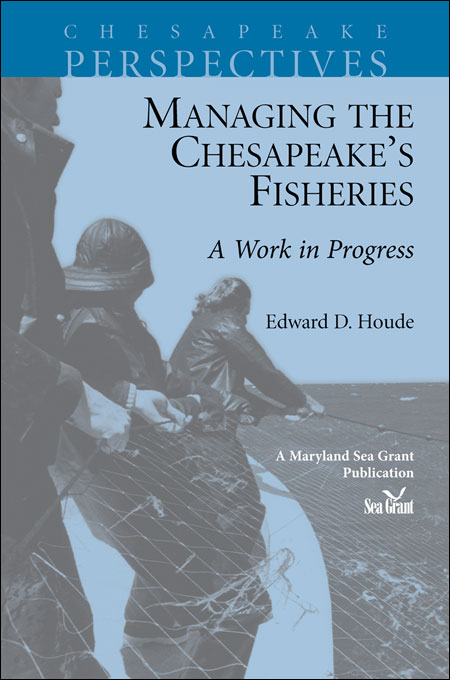Knauss legislative fellowships in Congress help build careers — and they're fun and educational. See our video and fact sheet for details.
These High School Students Built a Fish Farm in a Classroom
Maryland educators are using aquaponics to teach science better
Robert Friedman and his fellow students at Baltimore Polytechnic Institute never thought their after-school project would cause a four-inch flood.
But then again, this project wasn’t designed to be predictable or tidy.
Starting in 2014, dozens of students at Poly, as the high school is known, had donated time to build a working fish farm. They would set up tanks each holding 200 gallons and a maze of supporting plumbing racks, instruments, and wiring.
Friedman recalled how the project’s teacher-advisers were clear about the assignment from the start: they expected the students to design and build this “aquaponics” laboratory. Aquaponics is a way of raising fish and plants in a self-sustaining system. This approach is environmentally friendly because it recycles waste from the fish, using it to grow plants like lettuce and basil. And because water is recirculated from fish tanks through the growing plants and back again, this method conserves water.
The teachers, William "Buddy" Wolfe and Jeff Reeser, gave the students some general guidance about building this system — but they also made it clear that success would require trial and error. The point of the project was for the students to study engineering and science in a new way by solving practical problems, says Friedman. “It was us using our engineering knowledge that we learned in classes.”
 |
|
Thomas Heck, a senior at Baltimore Polytechnic Institute, measures the water temperature in a 200-gallon tank in the high school's new aquaponics lab, where students are raising tilapia. Credit: Jeffrey Brainard |
Problem-solving skills came in handy when the students filled one of the tanks for the first time. A plumbing connection wasn’t quite right. The tank leaked and flooded the vacant classroom where the students were building the laboratory. Fortunately the room had a floor drain.
In all, 115 students did the carpentry and other work to build the laboratory and its tanks. And they fixed the plumbing problem. In November 2015, the students and their advisers held a ceremony to unveil the result of their labor and trouble-shooting. Two tanks held dozens of tilapia. The students will fill two more tanks and use the laboratory to raise tilapia and other species of fish. They’ll also conduct science experiments to study principles of chemistry (maintaining water quality and pH to keep the fish alive), physics (water flow), and biology (the life cycles of fish). All of these skills and concepts are useful for learning about environmental science.
“It’s really good to see this aquaponics system running every day,” says Friedman, a senior. “We’re really proud of it. Part of that is from doing it ourselves.”
 |
|
Baltimore City high school senior Tuvia Rappaport helped to build the new aquaponics lab at Baltimore Polytechnic Institute. He credits the experience with helping him to land a science internship at the University of Maryland-Baltimore County. Credit: Jeffrey Brainard |
Tuvia Rappaport, another senior who helped build the tanks, credits the experience with his landing an internship this year with a research team in atmospheric science at the University of Maryland—Baltimore County. “I talked about the hands-on stuff I do here. It was an amazing experience to contribute to building that.”
Poly's project was based on a teaching model called Aquaculture in Action that was developed by Maryland Sea Grant and its partners. The model is now used in 22 other schools in eight Maryland counties. Poly is one of the first schools in Baltimore City to set up such a facility using this model. The new lab is the city’s largest.
This teaching method has every reason to spread further in Maryland, says J. Adam Frederick, assistant director for education at Maryland Sea Grant. He has helped to develop the Aquaculture in Action instructional approach in cooperation with Jackie Takacs, a specialist with Maryland Sea Grant Extension.
The use of aquaponics to teach science is also growing across the United States. Frederick and colleagues at the Johns Hopkins University recently collected some of the first comprehensive data on how many students are being taught with this method and how much it costs. Read their results in a recent issue of the journal European Journal of Health & Biology Education.
Photo, top left: Robert Friedman (left) and Samuel Goldman (right), both seniors at Baltimore Polytechnic Institute, are co-managers of the high school’s new aquaponics lab. They and other students built the laboratory as part of a teaching method that emphasizes applying science and engineering to solve real-world problems. The frames holding the aquaponics tanks were painted blue and orange to match the school’s colors. Credit: Jeffrey Brainard
For More Information
“Bringing the Bay Into the Classroom,” Chesapeake Quarterly, Vol. 13, Number 4, December 2014
Maryland Sea Grant K-12 Aquaculture Education
See all posts from the On the Bay blog







